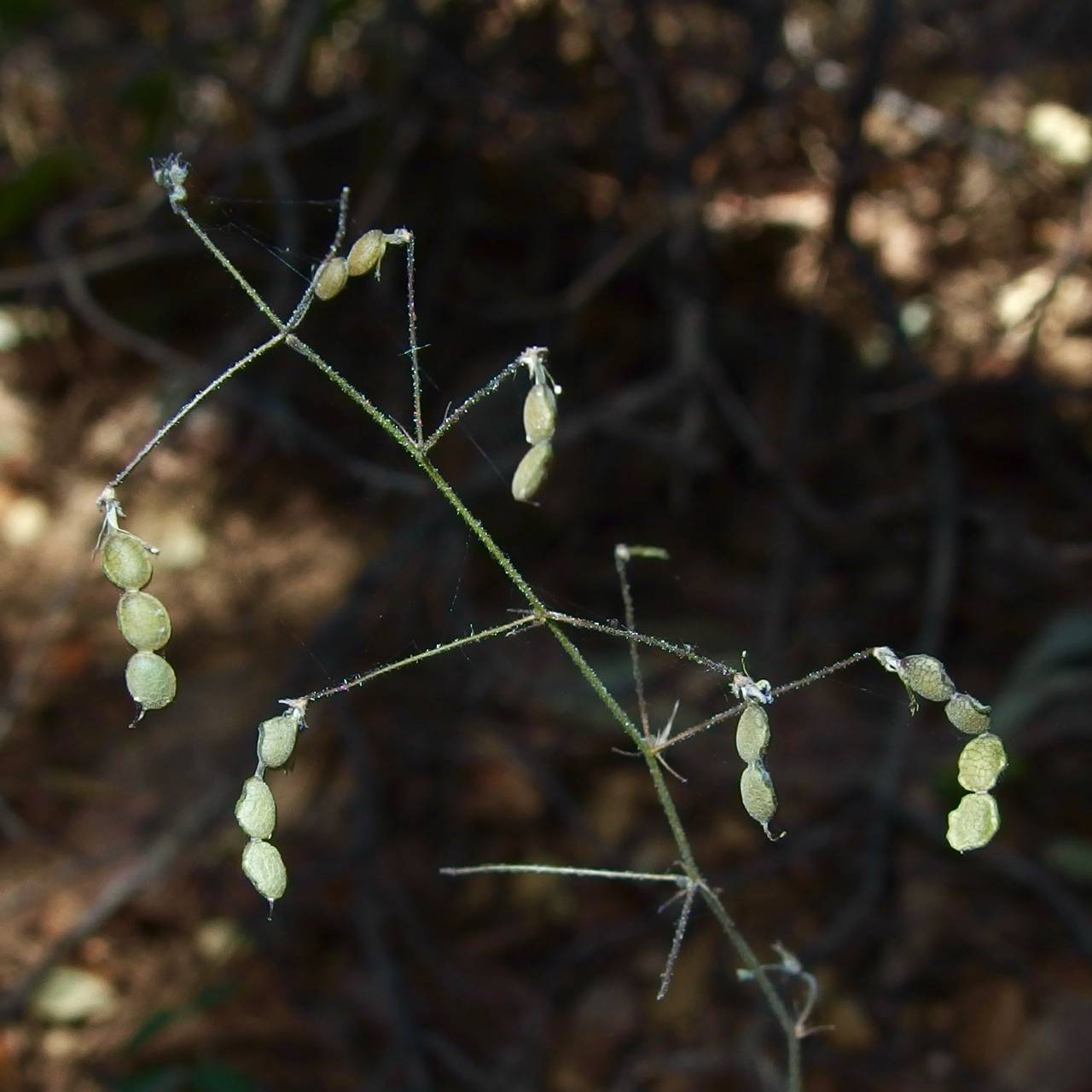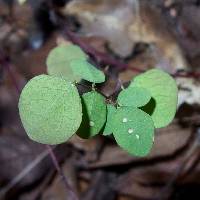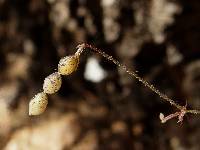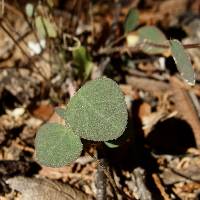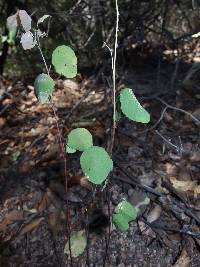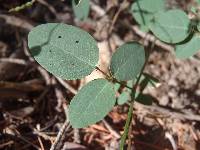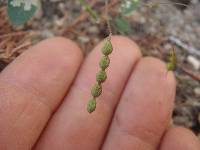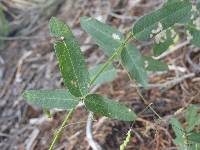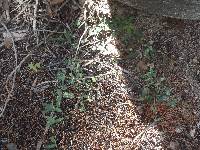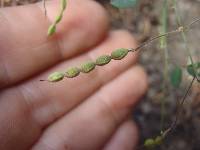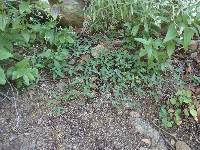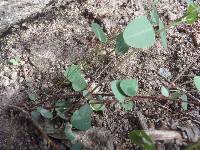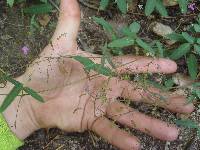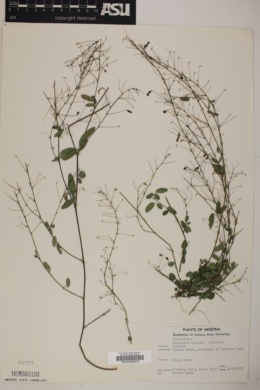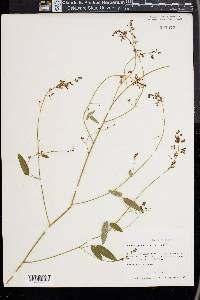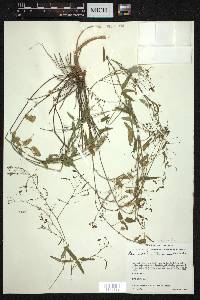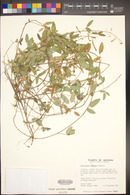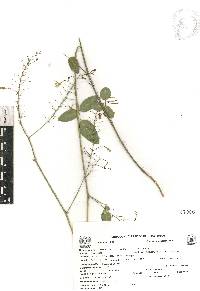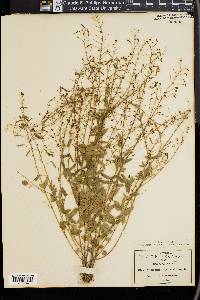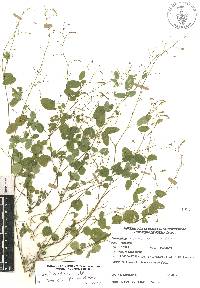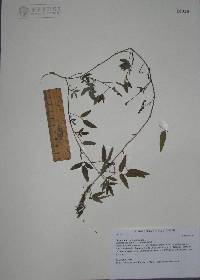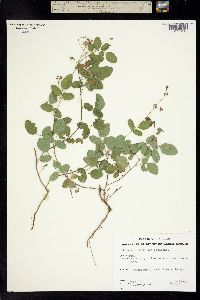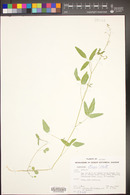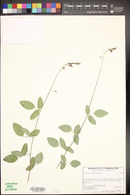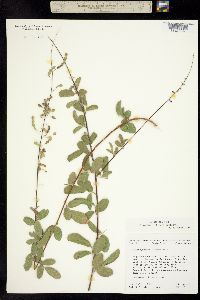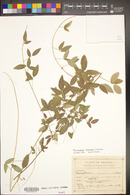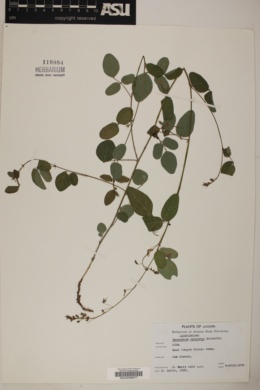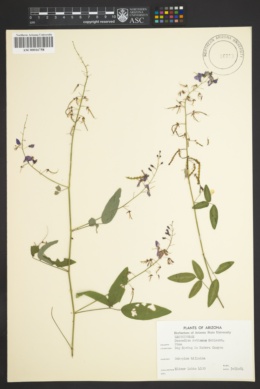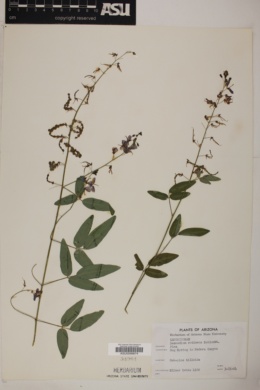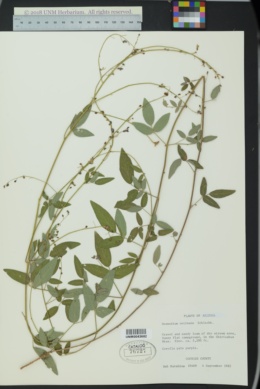
|
|
|
|
Family: Fabaceae
Santa Rita Mountain Tick-Trefoil, more...Santa Rita Mountain ticktrefoil, Santa Rita tick trefoil
[Desmodium wislizeni Engelm. ex A. Gray, moreMeibomia retinens (Schlecht.) Kuntze, Meibomia wrightii (Engelm. ex A. Gray) Kuntze] |
Perennial, Herbs, Stems woody below, or from woody crown or caudex, Taproot present, Nodules present, Stems erect or ascending, Stems or branches arching, spreading or decumbent, Stems prostrate, trailing, or mat forming, Stems less than 1 m tall, Stems solid, Stems or young twigs sparsely to densely hairy, Stems hairs pilose or spreading, Stems with hooked uncinate hairs or prickles, Leaves alternate, Leaves petiolate, Stipules conspicuous, Stipules green, triangula te to lanceolate or foliaceous, Stipules deciduous, Stipules free, Leaves compound, Leaves pinnately 3-foliolate, Leaves odd pinnate, Leaf or leaflet margins entire, Leaflets opposite, Stipels present at base of leaflets, Leaflets 3, Leaves hairy on one or both surfaces, Inflorescences racemes, Inflorescence axillary, Inflorescence terminal, Bracts very small, absent or caducous, Bracteoles present, Flowers zygomorphic, Calyx 2-lipped or 2-lobed, Calyx hairy, Petals separate, Corolla papilionaceous, Petals clawed, Petals pinkish to rose, Petals blue, lavander to purple, or violet, Banner petal ovoid or obovate, Wing petals narrow, oblanceolate to oblong, Wing tips obtuse or rounded, Keel tips obtuse or rounded, not beaked, Stamens 9-10, Stamens diadelphous, 9 united, 1 free, Filaments glabrous, Style terete, Fruit a loment, jointed, separating into articles, Fruit stipitate, Fruit unilocular, Fruit indehiscent, Fruit elongate, straight, Fruit exserted from calyx, Fruit comp ressed between seeds, Fruit hairy, Fruit 3-10 seeded, Seeds ovoid to rounded in outline, Seeds reniform, Seed surface smooth, Seeds olive, brown, or black.
Kearney and Peebles 1969, McDougall 1973, USDA, NRCS 2012 Duration: Perennial Nativity: Native Lifeform: Forb/Herb General: Herbaceous perennials, stems diffuse to prostrate or trailing, to 1 m long, herbage pubescent to pilose, the hairs appressed to spreading, plants herbaceous to suffrutescent. Leaves: Alternate, trifoliate, leaflets oblong-lanceolate or ovate-lanceolate to ovate, margins entire, surfaces with distinct net-veins (reticulate), blades petiolate with evident stipules, stipules triangulate to to lanceolate or foliaceous. Flowers: Pink to purple or rarely white, with banner, wing, and keel petals (papilionaceous), petals clawed, banner obovoid to ovate, wing petals with obtuse to rounded tips, keel not beaked, also with obtuse to rounded tips, calyx bilabiate, the upper lip bifid, the lower lip tridentate, surfaces hairy, stamens 9-10, floral bracts absent to inconspicuous borne terminal or axillary, in simple to compound racemes, these on conspicuous peduncles. Fruits: Flattened pods of indehiscent segments, segments 3-10, each segment 3 mm long or less, these normally not contorted, surface glabrous to puberulent, borne on a short stipe. Seeds olive, brown, or black, kidney-shaped (reniform), 1 per segment. Ecology: Unknown Distribution: Arizona; Mexico. Notes: Ecology data was elusive for this species. Kearney and Peebles note that the joints of the pods stick tightly to clothing and to the hair of animals. Good identifiers for this species are the perennial habit, the diffuse or procumbent stems, the trifoliate leaves with oblong-lanceolate to ovate leaflets, and the fruit segments which are 3 mm long or less, not contorted. Ethnobotany: There is no use recorded for this species, but other species in this genus have uses. Etymology: Desmodium is from the Greek desmos for chain, which is a reference to the jointed seed pods, while retinens is Latin for confining or delaying. Synonyms: Desmodium wislizeni, Meibomia retinens Editor: LCrumbacher 2012 |
|
|
|
This project was made possible in part by the Institute of Museum and Library Services [MG-70-19-0057-19].
Powered by Symbiota

